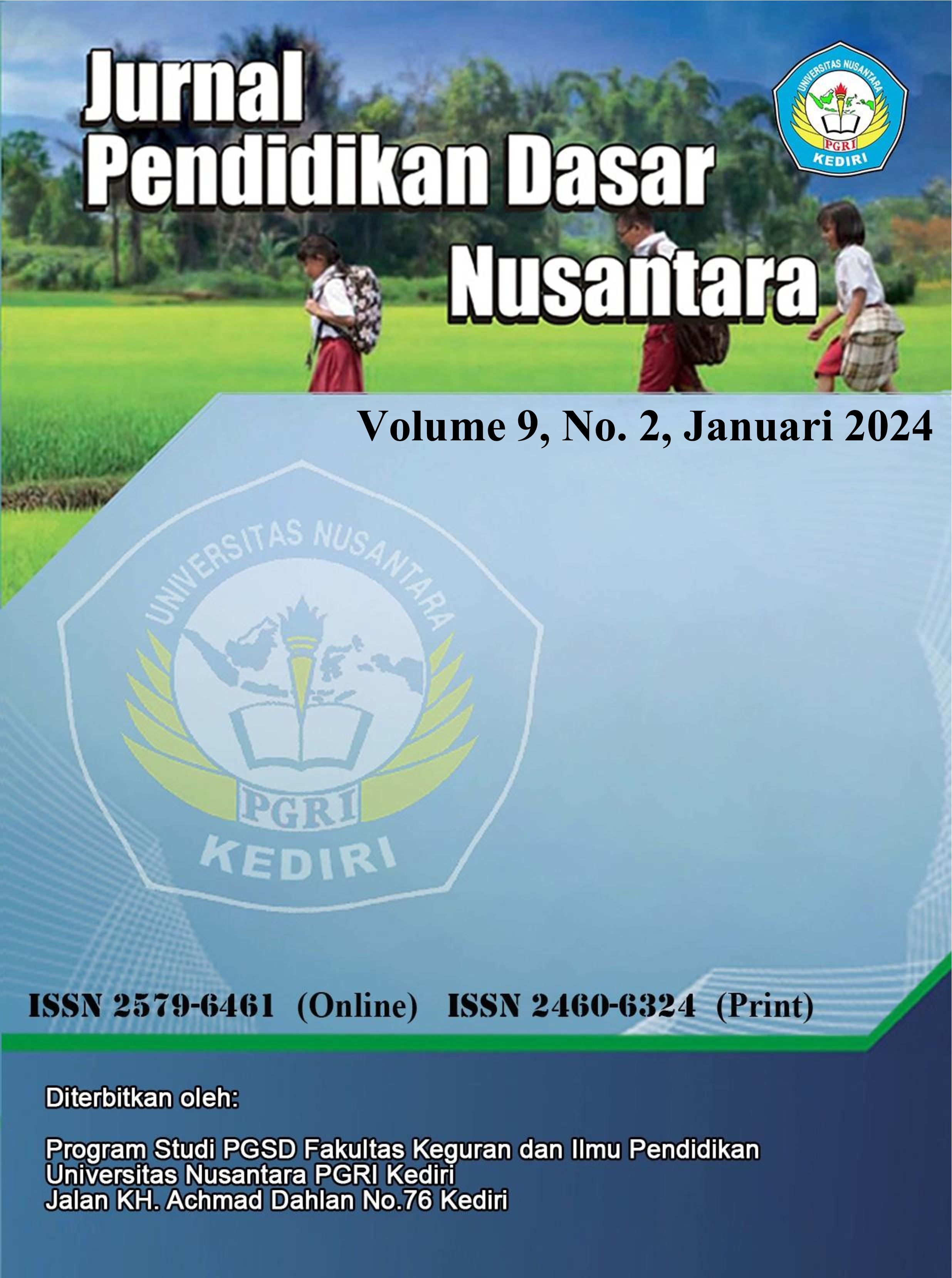Influence of assisted POE (predict, observe, explain) model diorama on students' understanding of science concepts at SD Negeri Pringapus 01
DOI:
https://doi.org/10.29407/jpdn.v9i2.22100Keywords:
POE (Pedict, Observe, Explain); Diorama; Concept understandingAbstract
This research aims to determine the difference in the use of the POE (Predict, Observe, Explain) model assisted by dioramas on understanding concepts, to find out the effect of using the POE (Predict, Observe, Explain) model assisted by dioramas on understanding concepts. This research was conducted at SDN Pringapus 01. This research uses a quantitative approach with a quasi-experimental method. The sample determination in this research was purposive sampling. The population in this study were students at SDN Pringapus 01. The samples taken in this study were class IV at SDN Pringapus 01. Where class IV A was the experimental class and class IV B was the control class. With data collection techniques using science description question sheets, observation sheets and questionnaires. The data analysis techniques used are normality tests, homogeneity tests and hypothesis tests in the form of paired sample t-tests and simple linear regression tests. The research results show (1) there is an influence of using the POE (Predict, Observe, Explain) model assisted by dioramas on increasing understanding of concepts. This is proven by a significant value of 0.000 <0.05. (2) There is a significant difference between learning using the POE (Predict, Observe, Explain) model assisted by dioramas towards understanding science concepts. This is also proven by the significance results of 0.000 <0.05. The conclusion from this research is that the POE (Predict, Observe, Explain) model assisted by dioramas has an influence in increasing students' understanding of science concepts.
Downloads
References
Arikunto, Suharsimi. (2021). Dasar-Dasar Evaluasi Pendidikan Edisi 3. Jakarta: Bumi Aksara.
Aris, I. E., & Hanifah, U. (2021). Pengaruh Penggunaan Media Diorama Terhadap Hasil Belajar Kognitif IPA Materi Ekosistem Pada Siswa Kelas V SDN Singapadu Curug Kota Serang Banten. jurnal Pendidikan Dasar ,2 (1), 56-69.
Fahrinnisak. (2018). Penerapan Model Pembelajaran POE (Predict,Observe,Explain) Terhadap Hasil Belajar Siswa Kelas V Di SD Pangarangan III Sumenep. Jurnal Pendidikan Dasar, 2(1), 10-24.
Lestari, S., & Suryani, E. (2021). Pengaruh Model Pembelajaran Contextual Teaching And Learning (CTL) berbasis SETS Terhadap Pemahaman Konsep Siswa Kelas IV SD Hj. Isriati Moenadi Ungaran . Jurnal Persada, IV, 40 - 45 .
Nuha, F. H., & Purwanti, K. Y. (2023). The Effect of Game Based Learning Assisted by Fun Card Puzzle on the Conceptual Understanding of Class 5th Elementary School Students. International Journal of Scientific Multidisciplinary Research, 1(5), 527-538.
Nurliana, A., Rondiyana, R., & Haryanti, Y. D. (2019). Pengaruh Model Pembelajaran POE(Predict, Observe,Explain) Terhadap Pemahaman Konsep IPA Siswa Sekolah Dasar. Prosidising Seminar Nasional Pendidikan 1, 76-86.
Novanto, S. Y., Anitra, R., & Wulandari, F. (2021). Pengaruh Model Pembelajaran POE Terhadap Kemampuan Pemahaman Konsep IPA Siswa SD .jurnal hasil kajian ,inovasi,dan aplikasi pendidikan fisika, 7(1), 205-211.
Sudjana, Nana. (2013). Dasar-Dasar Proses Belajar Mengajar. Bandung: Sinar Baru Algesindo.
Sugiyono. (2015). Metode Penelitian Pendidikan Pendekatan Kuantitatif, Kualitatif, dan R&D. Alfabeta
Downloads
Published
Issue
Section
License
Authors who publish with this journal agree to the following terms:
- Copyright on any article is retained by the author(s).
- The author grants the journal, the right of first publication with the work simultaneously licensed under a Creative Commons Attribution License that allows others to share the work with an acknowledgment of the work’s authorship and initial publication in this journal.
- Authors are able to enter into separate, additional contractual arrangements for the non-exclusive distribution of the journal’s published version of the work (e.g., post it to an institutional repository or publish it in a book), with an acknowledgment of its initial publication in this journal.
- Authors are permitted and encouraged to post their work online (e.g., in institutional repositories or on their website) prior to and during the submission process, as it can lead to productive exchanges, as well as earlier and greater citation of published work.
- The article and any associated published material is distributed under the Creative Commons Attribution-ShareAlike 4.0 International License

































